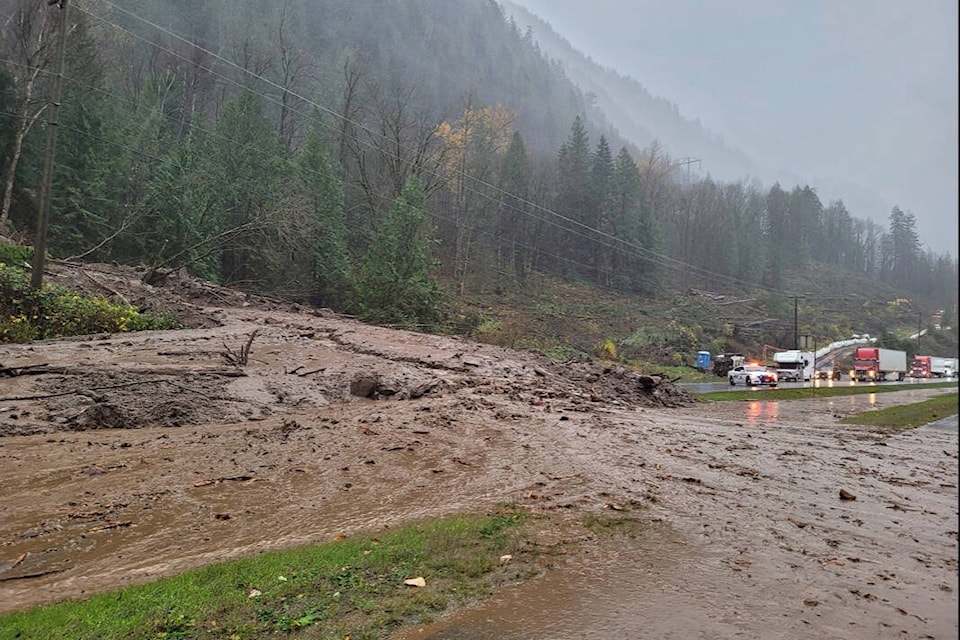This was the first time in recent memory a natural disaster necessitated the use of the Agassiz Agricultural Hall. Yet, in November 2021, there was no hesitation, no second thoughts and no time to lose as volunteers sprang into action during the atmospheric river disaster last year.
Agassiz Agricultural and Horticultural Association president Victoria Brookes remembered getting a call from the District of Kent explaining the situation that was unfolding under torrential downpours. Hundreds of travelers along the Lougheed Highway were stranded between two massive mudslides between Seabird Island and west of Agassiz. The district called on the Ag Association to create a warming shelter of sorts out of the Agassiz Agricultural Hall – one of the largest buildings in the district.
“When I received the call from the district to use the Ag Hall as a rescue centre, my first thought was yes,” Brookes recalled. “I technically should check with the other directors, but I knew this was too important.”
As Brookes prepared the coffee and tea for the cold and weary travelers, volunteers and donations poured in – pastries from Cabin Fever Junction, clothing from local second-hand stores, food, bedding pet supplies all came in as helpers at the Ag Hall prepared for a slew of overnight guests.
“We weren’t sure who could go home or how many people would stay overnight,” she recalled. “A few stayed overnight, some were local and were picked up and others stayed in hotels in Chilliwack, hoping the road would open so they could get down to the Vancouver area faster.”
Helicopter after helicopter, the Royal Canadian Air Force lifted more than 300 people (and nearly 30 animals) from the clogged highway to the Agassiz fairgrounds, where they were transported by bus to the Ag Hall to warm up, get some food and some rest.
The speed at which the community responded to the disaster and their generosity really left an impression not only on Brookes but on the hundreds of travelers who came through the area.
“I was just so impressed by how all of this came together so quickly,” she recalled. “We had food, clothing, food for dogs and the cat. The (travelers) were so grateful. You could tell people were really touched. They were in such a difficult situation, but they were so grateful.”
Brookes specifically recalled giving a cookie to a happy girl who regaled her with tales of her trip on the military helicopter.
“Right away, people felt comforted,” she said. “That was pretty scary for them all, of course. They were so grateful and really touched. They said ‘Thank you so much for doing all this.’ But that’s what people do when they’re hurting.”
Brookes said her daughter was volunteering at a makeshift evacuation centre in Hope, which was cut off from much of B.C. after a portion of the Coquihalla Highway was virtually destroyed by relentless flood waters. She recalled her daughter being amazed at the number of people who needed help in the area.
“You never think about how many people go through all the time until all of the sudden, they can’t get in or out,” Brookes said. “I even noticed there’s a big difference if one lane is blocked. It’s just a solid line.”
For all the impact offering food, shelter and warmth had on the travelers, Brookes remained humbled at the Herculean efforts of the local fire departments, police, paramedics and Search and Rescue volunteers as they navigated the flood waters and dangerous mudslides.
“I was very impressed how it all came together; it showed that we have (emergency) preparations in place. It was a really fine example of how our community helps.”
